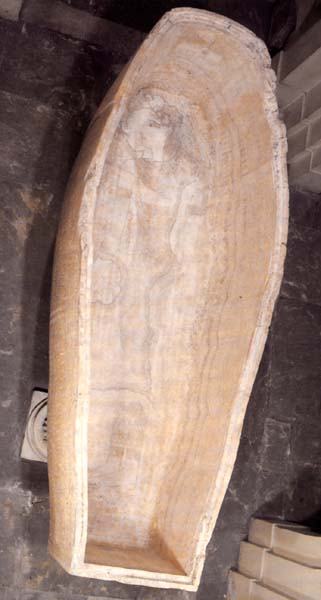
Crypt of the Sir John Soane Museum in London
The basement Crypt was intended to have an atmosphere reminiscent of Roman burial chambers or catacombs. Many of the sculptures
on display are plaster models of famous marble monuments. These models are not copies but design prototypes which the sculptor used to present a design to a client or to instruct his assistants. Those on the south side of the Crypt, on the walls either
side, are designs by John Flaxman (1755-1826), the neo-classical sculptor who was a close friend of Soane.
The Sepulchral Chamber contains the sarcophagus of Sety I (Menmaatra) 1294 - 1279 BC), one of the most important Egyptian
antiquities ever to be discovered. The hieroglyphics, still un-deciphered in Soane's time, tell the story of the soul's passage through the underworld. The tall figure in the bottom of the base is the Goddess Nut. The sarcophagus is carved out of a single piece of 'Egyptian alabaster', a calcite limestone. It was originally white and the hieroglyphs were inlaid
with a bright blue composition. The London air has caused most of the composition to disintegrate, and the stone to turn yellow.
The sarcophagus was discovered in the Valley of the Kings by Giovanni Belzoni, a successful Egyptologist who first rose
to fame as a theatrical strong-man. The sarcophagus was purchased by Soane in 1824 after the British Museum refused the price of £2,000, and Soane celebrated its arrival with three evening parties. He invited nearly a thousand people and hired
more than three hundred oil lamps to illuminate the building.